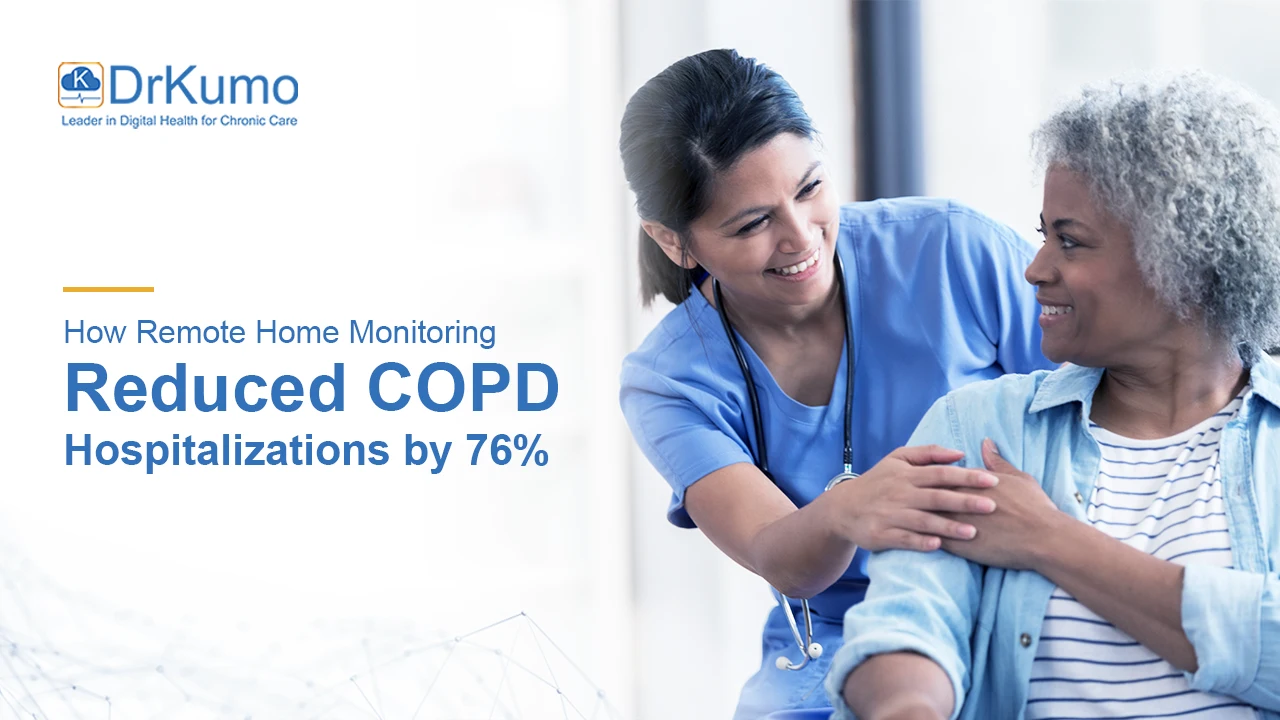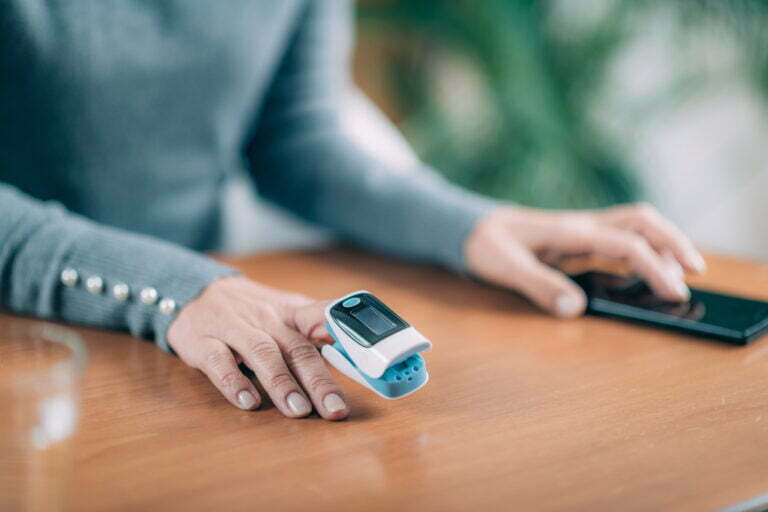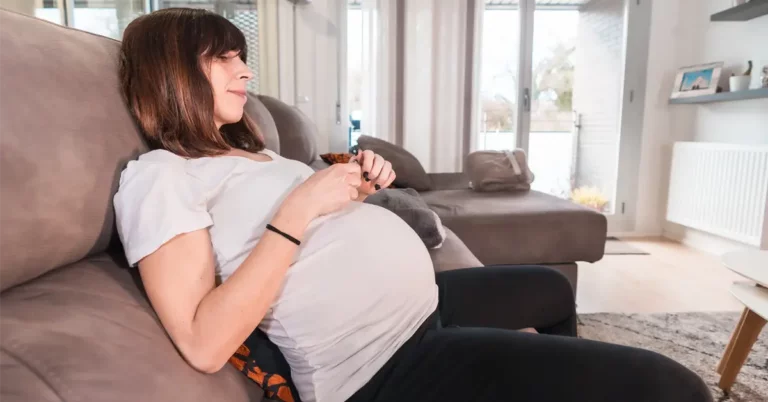Chronic Obstructive Pulmonary Disease (COPD) is a leading cause of morbidity and mortality worldwide, affecting millions of individuals and placing significant strain on healthcare systems. In the United States, the total cost related to COPD is projected to reach $800.90 billion over the next two decades, with annual costs estimated at $40 billion. This figure emphasizes the long-term financial burden placed on healthcare systems due to COPD exacerbations.
Innovative solutions like Remote Home Monitoring (RHM), a subset of Remote Patient Monitoring (RPM), have proven to be highly effective in reducing hospital admissions. In fact, recent studies indicate that RHM reduces hospitalizations by 76% for COPD patients.
In this blog, we explore how RPM works to decrease hospitalizations and why it’s becoming an essential tool in chronic care management.
Understanding Remote Home Monitoring (RHM) and RPM
Remote Health Monitoring (RHM) is a specific application of Remote Patient Monitoring (RPM) that focuses on continuous, real-time monitoring of patients while they are at home. Unlike other RPM methods that may only track intermittent or scheduled data points (e.g., periodic updates on vital signs or health surveys), RHM provides constant data collection and interpretation.
RHM allows healthcare providers to make immediate, informed decisions based on live data, rather than waiting for periodic reports or patient-initiated updates.
By leveraging RHM, healthcare organizations can continuously monitor a patient’s symptoms and respond to changes in real time, preventing hospital admissions. This is especially critical for chronic conditions like COPD, where timely interventions can stop health deteriorations before they become severe.
The Role of RPM in COPD Management
RPM facilitates the continuous collection and interpretation of patient data, eliminating the necessity for frequent in-person consultations. This is especially beneficial for patients with chronic conditions like COPD, which requires continuous observation and management to prevent exacerbation. Devices such as blood oxygen monitors, blood pressure monitors, and other remote patient monitoring devices are used to track physiologic data and intervene before the patient’s condition worsens.
According to a study published in Frontiers in Medicine by Coutu et al. (2023), RPM strategies and wearable technology have revolutionized COPD management. RPM devices provide real-time data on key health metrics such as oxygen saturation (SpO2), heart rate, and respiratory rate, which allows healthcare professionals to detect early signs of COPD exacerbations and adjust treatment plans accordingly. The ability to improve patient outcomes while reducing hospital visits has significantly improved the quality of life for people with COPD.
Study Findings: RPM Reduces Hospitalizations by 76%
A systematic review published in BMC Health Services Research in 2022 examined the effectiveness of RPM for managing COPD. Conducted by researchers from the University of Alberta and Alberta Health Services, the study reviewed 19 studies to assess the impact of RPM on COPD patient outcomes. RPM programs aim to monitor patients at home, reducing hospital visits and improving overall disease management. Below is a summary of the study’s key findings:
Reduction in Hospitalizations:
- The systematic review found that RPM programs, particularly those with regular feedback from healthcare providers, significantly reduced hospital admissions related to COPD by 76%.
- This reduction suggests that RPM’s real-time monitoring capabilities allow for early detection of worsening symptoms, leading to prompt interventions and preventing severe exacerbations that typically result in hospital visits.
- By decreasing hospitalization rates, RPM can help alleviate the strain on healthcare systems, reducing overall costs associated with managing COPD patients.
Impact on Health-Related Quality of Life (HRQoL):
- The study noted that the evidence regarding RPM’s ability to improve HRQoL was mixed and inconclusive.
- HRQoL is influenced by various factors like symptom management, mental health, and physical functioning, and the review found no consistent improvement across studies.
- This variability is attributed to differences in the RPM technologies used, the duration of studies, and the types of interventions involved. Some patients may benefit more from RPM than others, depending on their individual health circumstances.
Patient Satisfaction:
- Despite the unclear impact on HRQoL, patient satisfaction with RPM was notably high.
- Most patients found RPM technologies easy to use, and they reported feeling more in control of their health and better able to manage their COPD symptoms.
- The ability to track their own health metrics, combined with the security of receiving regular feedback from healthcare providers, contributed to a sense of reassurance and reduced anxiety.
Adherence to Monitoring:
- Adherence to RPM programs varied across studies, with some showing that patients were highly compliant in regularly transmitting health data, while others showed less consistent engagement.
- The review suggested that adherence might improve when healthcare providers actively engage with patients by offering feedback based on the monitored data, motivating patients to continue using the technology effectively.
Provider Feedback as a Key Factor:
- One of the major findings was that RPM programs combined with regular provider feedback were more effective at reducing hospitalizations compared to RPM programs without feedback.
- This underscores the importance of human oversight in remote monitoring systems, where real-time data must be reviewed and acted upon by healthcare professionals to ensure timely interventions and adjustments in care plans.
The Future of COPD Care with RPM
The benefits of remote home monitoring extend beyond reducing hospitalizations. By continuously tracking a patient’s condition, RPM platforms enable long-term disease management protocols. This is particularly important for conditions like COPD, where daily fluctuations in oxygen levels, lung function, and airway obstruction can indicate worsening symptoms. RPM also plays a crucial role in pulmonary rehabilitation, helping patients stay on track with exercise and other interventions that improve lung function and quality of life.
Chronic conditions like COPD are progressive and require ongoing care. By integrating remote patient monitoring RPM devices, healthcare providers can deliver more personalized, data-driven care that not only improves outcomes but also enhances patient satisfaction. RPM services are now recognized as a key component of chronic care management, ensuring that patients receive timely interventions before their condition worsens.
How Remote Home Monitoring Works in the DrKumo Ecosystem
DrKumo’s RPM solutions, manage chronic conditions like COPD through real-time health data monitoring. Its HIPAA-compliant platform enables healthcare providers to remotely track physiologic data, offering timely feedback and preventing exacerbations.
For example, DrKumo’s remote patient monitoring devices transmit crucial health data like blood oxygen levels and lung function to healthcare providers, enabling them to intervene before complications arise. This reduces the likelihood of hospital readmissions and improves patient outcomes, making remote patient monitoring a key element in chronic care management.
DrKumo’s platform is also vital during public health emergencies, allowing patients to manage their chronic lung disease at home, minimizing their risk of exposure to external health risks like air pollution and secondhand smoke. The system also supports healthcare organizations in maintaining care management protocols, even in challenging situations.
Takeaways
The impact of RPM on COPD care is clear — it not only reduces the burden on patients but also improves their quality of life by preventing hospitalizations. Using advanced remote patient monitoring devices, COPD patients can enjoy better health conditions, while healthcare providers can intervene before complications arise. As remote monitoring technology continues to evolve, more healthcare organizations will adopt these systems as part of their care management protocols.
For more information on how DrKumo’s Remote Patient Monitoring can help manage COPD and other chronic conditions, contact us now.
Disclaimer: DrKumo’s RPM is not an emergency service. In the case of a medical emergency, please contact your local emergency services or visit the nearest hospital.








